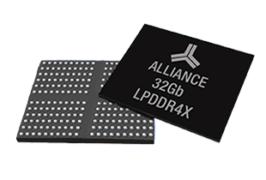Growing innovative product demand in transport and enforcement of severe government policies and regulations concerning the environment are some factors influencing the electric motors market outlook for transportation sector. Government regulations stating the implementation of electric motorbikes and hybrid passenger cars will positively impact the European electric motors market from transportation applications.
It has been reported that the electric motors market share for transportation sector is likely to exceed $20 billion by 2026 worldwide. Some of the leading companies providing these motors are Siemens, Hyosung, WEG, General Electric, ABB, Robert Bosch, Regal Beloit, Toshiba Allied Motion Technologies, Buhler Motor Gmbh and Shandong, among many others.
The ongoing COVID-19 global pandemic has caused a setback to the electric motors industry and the decrease in the demand for motors can be reflected to the slowdown in the automotive manufacturing activities. Discussed below are some of the significant factors contributing to the electric motors market size for the transportation sector.
Manufacturing of newer & innovative products
Manufacturing firms in the transportation sector catering to the increasing demands of products and rising innovative enhancements in the automotive industrial products pertaining to customer requirements are driving the electric motors market sales for transportation sector. Varying industrial demands of electrical steel sheet used as the core of traction motors for hybrid electric vehicles is a factor affecting the product development.
Manufacturers are implementing several marketing strategies to improve product penetration by promoting hybrid vehicles to augment the overall electric motor industry sales. The ability to enhance the efficiency of the automobiles by lowering the gross weight will foster the expansion of electric motors market in transportation sector.
Use of various motors as per applications
The electric motors industry in transportation sector can be bifurcated into traction motors, small motors for consumer goods and industrial applications, and small motors for automotive based on motors. Traction motors are extensively employed in two-wheelers, trains and ATV’s for superior efficiency, enhanced reliability and low energy consumption in multiple applications, and the segment is anticipated to achieve a CAGR of over 6.5% through 2026.
Small DC motors for vehicles include the motors utilized for antilock braking system (ABS), air suspension, vacuum pumps, cooling fans & blowers’ motion and forklift actuation. Additionally, small DC motors that are deployed in railway and aerospace applications include low voltage motor, high voltage motor, HVAC compressor motors and cooling motors. The specific use of the motors for various purposes will escalate the electric motors industry forecast.
OEMs remain as a key end-use customer
Electric motors market in transportation sector is fragmented on end use into OEMs and aftermarket. On comparison, OEMs largely influence the electric motor industry and are anticipated to hold 80% of the total global market share in the fore coming years for their extensive use in various applications like traction motors in manufacturing of electric vehicles and use of high-voltage cooling fan motor and HVAC compressors.
The OEMs are automobile, railways, aircraft or other equipment manufacturers utilizing electric motors in their products. The electric motors aftermarket segment in the transport sector can be recognized as a dominant and secondary area for distinct applications of manufacturing, distribution, and installations of the product. Both the OEMs and aftermarket segments are predicted to considerably impact the overall industry growth value.
Source: Global Market insights, Inc.










